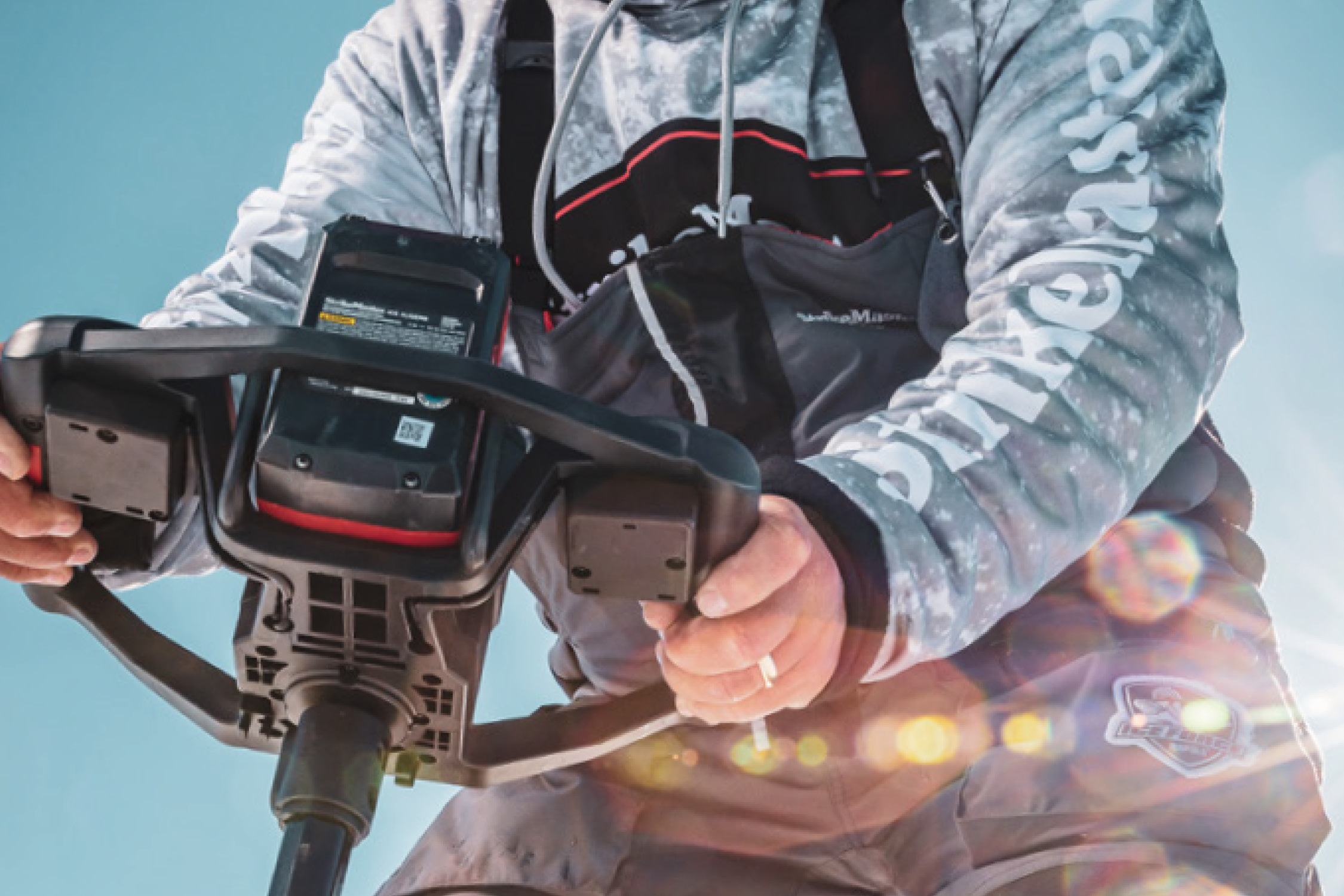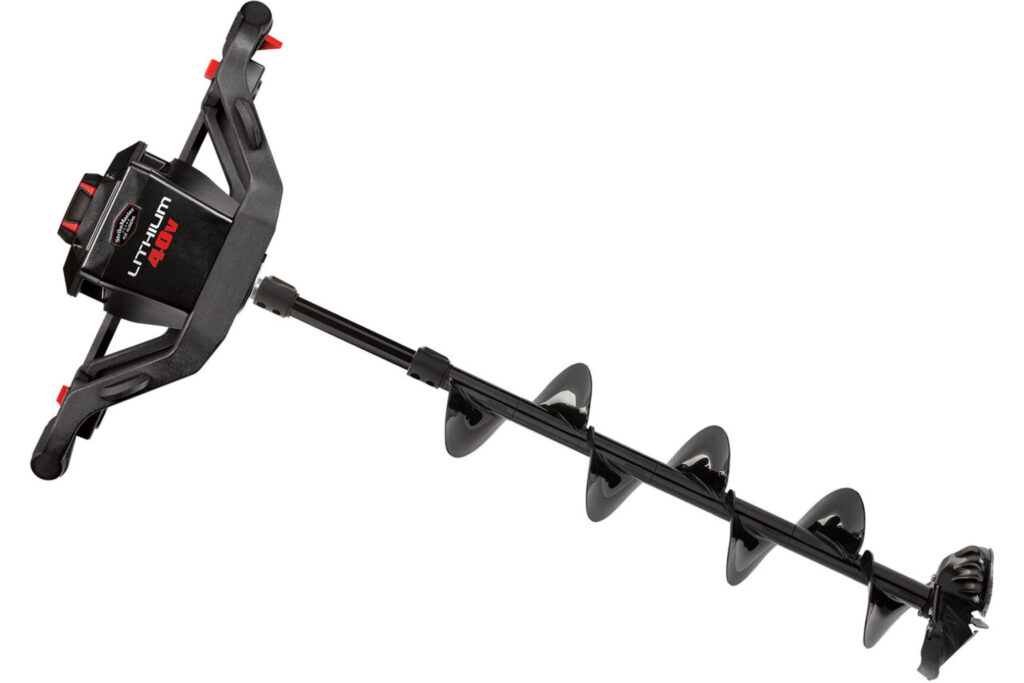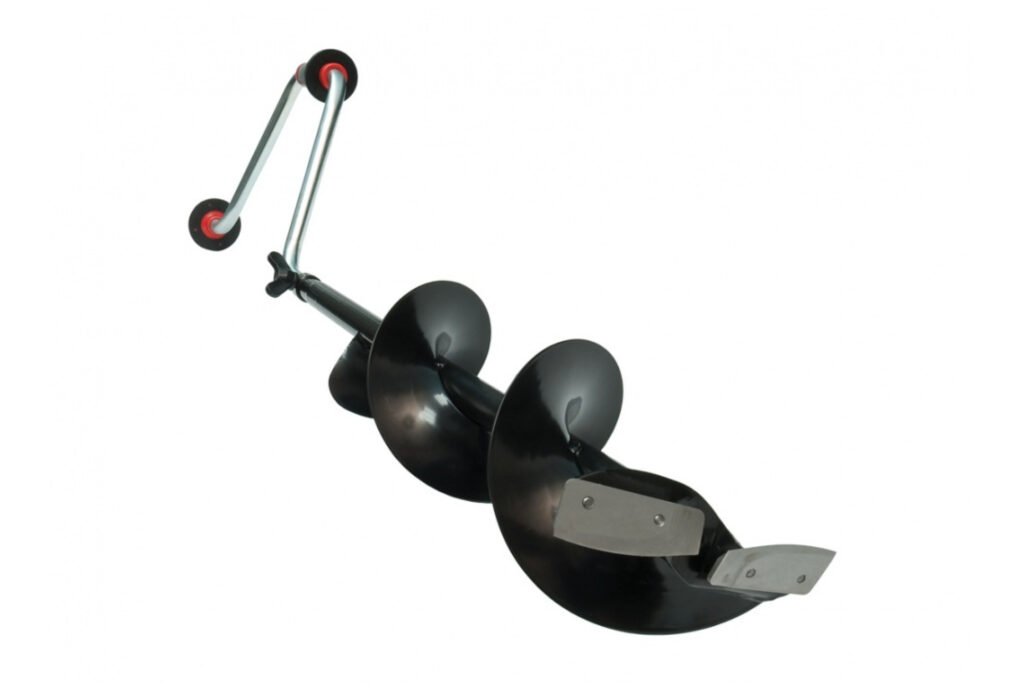The Best Gear for Walleye Fishing, as Recommended by an Expert
Fishing | August 20, 2025
SAIL
January 18, 2023

An ice fishing auger is an essential piece of equipment for hard-water anglers. Certainly, it is important to own a dependable, quality ice auger, but just as critical is using the tool efficiently, and to your advantage, as a means to help catch more fish.
To explain how ice fishing auger features and drilling methods can influence your angling success, the following will be discussed:
Drilling holes through ice comes with the territory when ice fishing. The best ice fishing auger is the one able to do its job efficiently and, in turn, allows you to drill holes quickly and get back to fishing as soon as possible.
Many anglers believe the best ice fishing augers available today are electric models, like the StrikeMaster Lithium 40 V Lite Ice Auger or Lithium 24 V Ice Auger. Let’s look at a few reason why.
Electric augers offer many features & accessories helping anglers be more efficient on the ice. Drilling speed is one. Continuing with the examples of StrikeMaster’s Lithium 40 V and 24 V Ice Augers, an angler simply needs to pull up the operating lock lever (deadman’s switch) and press the power button for the brushless motor to immediately start powering the drill assembly, sending the twin serrated stainless steel Lazer blades cutting through ice. For anglers who drill a lot of holes, the time savings an electric ice auger offers over the course of a day is a strong selling point. This is especially true when compared to the downtime associated with waiting for a gas auger to warm up before being able to drill. Electric augers also do away with other common gas auger setbacks, like dirty carburetors and flooded engines.

Auger weight is another important detail. The lighter the ice drill, the easier it is to carry and the less likely an angler is to become fatigued. This, in turn, supports a mobile ice-fishing approach and being able to drill enough holes to properly fish an area. For comparison, an 8” StrikeMaster Lithium 40 V Lite Auger is 21 pounds while some 8” gas ice augers weigh over 30 pounds. An even lighter option is StrikeMaster’s Lithium 24 V Ice Augers — the 6” and 8” units being 13.3 and 14.3 pounds, respectively.
Despite the popularity of electric augers, many ice anglers still rely on hand ice fishing augers. Given a manual auger must be turned by hand to drill a hole, any efficiencies one can gain are beneficial. For example, anglers will get more performance from a hand auger featuring an offset handle, like Rapala’s Fin-Bore III. Its two-handed turning design results in more torque and power. Additionally, these augers have razor-sharp, curved stainless blades, which also contribute to the Fin-Bore III’s legendary fast and smooth drilling performance.

When and where you drill holes can have a significant impact on the amount of fish you catch. It’s best to plan and be strategic when drilling. A random approach wastes time and energy. Here are three examples of what calculated drilling practices can look like on the ice.
Using a digital map displaying a lake’s depth contours is one way to improve drilling efficiency and hole placement. Referring to a map makes it easier to locate good fishing areas, such as points, humps and drop-offs. Then, you can drill directly over these prime structures and avoid cutting unnecessary “search” holes. Maps are available on several smartphone apps as well as with portable fish finder/GPS combo units. Marking productive fishing spots with GPS waypoints is also a good practice, and sonars can be an efficient tool as well.
Another efficiency strategy is drilling holes in a pattern. Zigzagging holes along drop-offs let you systematically cover water at different depths along these productive fish-holding edges. Drilling in a grid pattern is helpful for dissecting large areas, such as a weed bed, to find the isolated features concentrating walleye, yellow perch, crappie, northern pike or other fish species.
It’s also best to avoid drilling holes when fish are biting, if possible, as the disturbance risks spooking them. If you know you’ll be fishing a certain area during a prime feeding window, such as jigging a hump for walleye at twilight, arrive early and drill all the holes you’ll need before the sun sets and fish get active.
When you can’t drill in advance, you may need to wait and allow the fish to settle down before they start biting. This is often most common when fishing shallow.
To wrap up this discussion on the advantages of owning an efficient ice fishing auger and the benefits of thinking about when, where and how you drill holes, here are a few more tips to keep in mind this hard-water season: